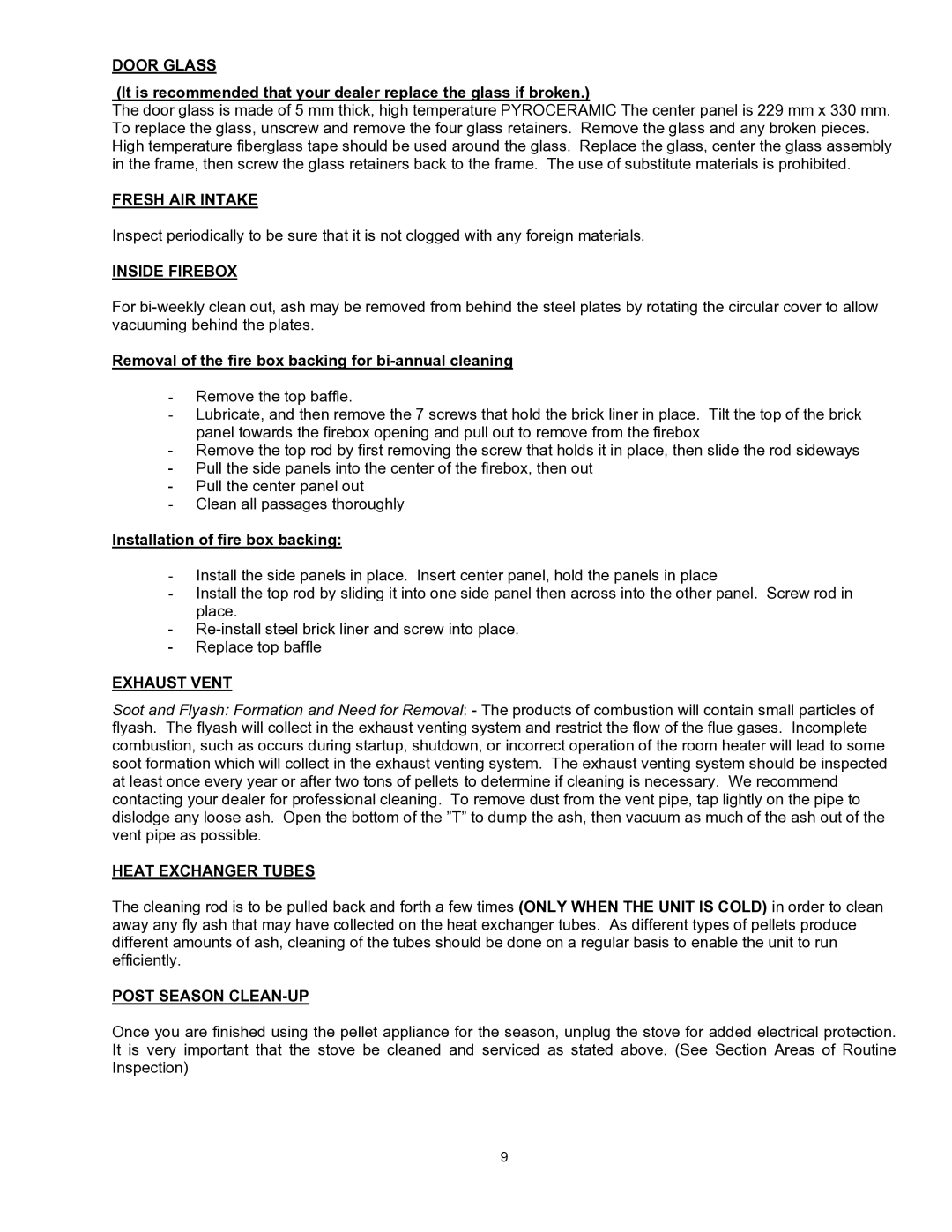EF-II I specifications
The Enviro EF-II I represents a significant advancement in eco-friendly filtration technology, designed to meet the demands of a rapidly changing environment. Focusing on high-efficiency performance and sustainability, the EF-II I offers an innovative approach to air and water purification, making it a vital tool for both residential and commercial applications.One of the key features of the Enviro EF-II I is its multi-stage filtration system. This system incorporates pre-filters, HEPA filters, and activated carbon filters, which work in concert to capture a wide range of pollutants, allergens, and harmful particles. The pre-filters are designed to trap larger particles, while HEPA technology ensures that up to 99.97% of airborne contaminants down to 0.3 microns are effectively removed. The activated carbon filter then targets volatile organic compounds (VOCs) and odors, resulting in cleaner, fresher air.
In addition to its robust filtration capabilities, the EF-II I is equipped with advanced sensing technology. The built-in smart sensors continuously monitor air quality and provide real-time feedback to users. The unit can adjust its performance based on current air conditions, optimizing energy use and enhancing overall efficiency. This responsive technology not only ensures a healthier indoor environment but also contributes to energy savings.
The design of the Enviro EF-II I emphasizes user-friendliness. An intuitive interface with easy-to-read displays allows users to monitor filter life, check air quality levels, and adjust settings with minimal hassle. Moreover, a smart app compatibility feature means users can control the device remotely, receiving alerts and notifications straight to their smartphones.
Another notable characteristic of the EF-II I is its eco-friendly construction. Made from sustainable materials, the device is built to last while minimizing environmental impact. The filters themselves are replaceable and recyclable, aligning with a commitment to reduce waste.
Noise reduction technology ensures that the EF-II I operates quietly, making it suitable for various environments, from homes to offices. This emphasis on a peaceful atmosphere, combined with the effectiveness of its filtration system, underscores the Enviro EF-II I's position as a leader in air and water purification technology.
In summary, the Enviro EF-II I merges state-of-the-art filtration technology with smart features and sustainable design, making it an essential solution for those seeking cleaner air and healthier living spaces. Its combination of efficiency, user-friendly operation, and environmental consciousness sets a new standard in the industry, catering to the needs of a modern, health-focused society.
